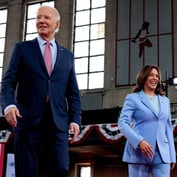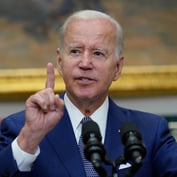As the last few warm days of the year wind down and animals and people alike snap out of their summer malaise to tackle their respective tasks at hand, Life Insurance Awareness Month is also concluding. And if the month-long awareness campaign did its job, as people prepare to vote in a presidential election, make the necessary repairs to their homes for winter and try and end their frivolous summer spending habits, they should also be contemplating the purchase of, or the purchase of enough life insurance.
A plethora of studies, white papers, surveys and polls striving to take the pulse of Americans’ attitudes towards life insurance have been published over the last month. Some of them stirring a surprising sense of optimism in the market, some of them highlighting very tactile hurdles. Some of them reiterating well-known challenges in the industry, some of them bringing to light new ones, some intuitive some, quite the opposite.
Of all the issues facing the industry both internally and externally, the coverage and mortality gap may be the most unnerving while simultaneously being one of the easiest to diagnose and repair.
In late August, just as Life Insurance Awareness Month was ready to begin, Swiss Re published a study, “The mortality protection gap in the US.” The study made a significant splash with its assertion that in 2010, the mortality protection gap (protection gap) in the US was $20 trillion or 135 percent of our gross domestic product. The mortality protection gap is defined as “the extent to which families are insufficiently covered in the event of the death of the primary breadwinner.”
The width and depth of the protection gap is clearly a double-edged sword for insurance companies as well as the agents that sell their products. Obviously one of the first things that one takes away from reading a statistic like that is the notion that the industry may not be doing its job regarding raising consumer awareness about the need for adequate protection. The second thing that one can take away is a little easier for the industry to stomach; the economic environment of the last four years with its high-unemployment and anemic growth is a major precipitating factor to the dismal findings in the report.
Let us first examine the symptom of the protection gap that falls directly on the industry’s shoulders. The Swiss Re study proposes that life insurers are not making a strong enough effort to address the protection gap. A survey that was published in early September by InsuranceQuotes.com found that a major misconception among those with little or no life insurance coverage was that it was “too expensive.”
The Swiss Re report found that nearly four in five underinsured households named lack of affordability as one of the main reasons that they have not purchased more life insurance. The study also found that 80 percent of consumers across all demographic groups overestimate the cost of life insurance. There clearly is a communication barrier that is working to stymie the sales process before it even gets off the ground due to a glaring misconception.
Swiss Re’s report suggests that life insurance can potentially be a rather small cost for many households across the country and the impetus to convey the message is clearly on the industry. Regarding the protection gap, the study states that life insurers should be able to showcase a “unique value proposition” (when compared to other financial products) so that consumers not only buy life insurance, but buy enough to close the protection gap. The study urges insurers to make a “concerted effort” to tackle the gap by doing more on their end to track and follow consumer perceptions and misconceptions while urging life insurers to track the attitudes and behaviors of their potential customers.
The other main precipitating factor of the protection gap is the aforementioned economic milieu that we have been enduring for the last four years and counting. Many have maintained that the economy has played a large role in the protection gap increase that we have seen over the last decade. Beginning with economic ripple effects that were felt immediately after September 11, 2001 and straight through to the present, many Americans have been hit with a perfect storm of declining real income, forced early retirement, rising debt levels, low returns on investments and decimated savings.
The Swiss Re report found that the aggregate protection gap for American households where the breadwinner is under the age of 55 increased by nearly 10 percent in the last decade. However, the trend towards an expanding protection gap began in earnest before the last decade and may very well continue on its downward spiral once our economy and, in turn American households begin to heal financially.








 October 03, 2012 at 08:00 PM
October 03, 2012 at 08:00 PM










